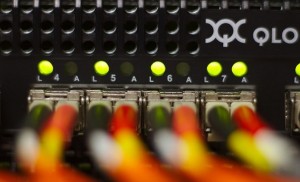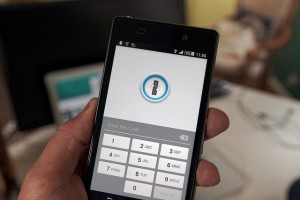 We have all seen an office building, whether it’s the 104 floor World Trade Center in New York City or the 5 floor office you work in. Many of these buildings house a multitude of different businesses. This begs the question, how do you protect your business when you share a space with multiple tenants? You don’t know their clientele or who is coming and going on a regular basis, just as they don’t know yours.
We have all seen an office building, whether it’s the 104 floor World Trade Center in New York City or the 5 floor office you work in. Many of these buildings house a multitude of different businesses. This begs the question, how do you protect your business when you share a space with multiple tenants? You don’t know their clientele or who is coming and going on a regular basis, just as they don’t know yours.
The security challenges that face business owners in a multi-tenant office space are diverse as each tenant is providing a different service with individualized needs. At Perfect Connections, Inc. we have been providing security system solutions to businesses throughout northern and central New Jersey for the past 23 years. Our experts understand the security complexities business owners and facility managers encounter on a daily basis, and we can provide an individualized plan specific to your company’s needs.
What security challenges do companies face in a multi-tenant space, and how can they be overcome?
A major challenge for tenants and facilities managers is communication. As each business within a shared space operates differently, they’re likely going to have different security needs. These needs should be clearly communicated with the building owner, facilities manager, and security systems provider. If you’re a business that requires a higher level of secured access into the main building, and your office space, that should be discussed up front.
Often times in a shared building there are already security features in the entrance or lobby. These areas serve as an initial means of access control, but different business owners may have different desired security restrictions. For example, the company next door to you might not require a sign-in or check-in with security upon arrival, but maybe your company does. Why does this matter? It may affect how you secure your individual office space within the building. You may not want another company’s client or employee accidentally wandering into your space. A building owner or manager may have their own set of restrictions for each tenant as well, so having that conversation up front is imperative. By having your own security in place you lessen the chances of workplace violence and employee theft from unauthorized entrants as well as within your own business.
Providing your employees with an emergency plan or protocol is important. The buildings facilities manager will likely already have a plan for the entire building that includes alarm testing, drills, and escape routes. You may be the type of company that wants to run your own emergency drills. Running emergency drills is a great way to ensure your employees are prepared. However, when running preparatory drills be sure to inform your neighbors and the facilities personnel to avoid confusion and unneeded chaos. It might be beneficial to hold a meeting about emergency procedures with the building manager and neighboring company owners to come up with a cohesive plan. That way you reduce the risk of complete panic if everyone is on the same page.
Construction and renovation within office buildings is not uncommon. Redistributing space or accumulating office space can pose a security challenge for tenants. During a renovation your building becomes a host to a multitude of people that you aren’t used to seeing on a daily basis. This includes construction workers, architects, inspectors etc. While these people are likely respectable individuals, you don’t know them, and you may not want them accidentally entering your space.
While most would agree a comprehensive security system is better to install during the initial stages of building construction, it doesn’t always happen that way. In some buildings you may have tenants that opt for an individualized security system after moving in. When acquiring space, you may run into old or inefficient security systems that do not align with what you might have in your current space. To ensure your security system is cohesive and efficient you should involve your security systems provider during the initial design phase for the new space. This will help make sure your current space is protected during the construction phase, and that all components will work seamlessly once completed. According to Sean Ahrens, a senior security consultant with Schirmer Engineering (in regards to access control and alarm monitoring), “The only way to address those issues is with communication during the design process.” He’s right, and this concept applies to all security issues a tenant may have.
While securing your business within a multi-tenant space can be complex, the technical side would be covered by your security systems provider. It’s up to you as the owner to communicate your desired outcome, get the right professionals involved from the start, and to have a vision for how you want your company protected. Here at Perfect Connections, Inc. we’ve been providing comprehensive security system solutions to companies throughout central and northern New Jersey since 1992. We provide everything from access controls to video surveillance and so much more. Our team can assess the risks specific to your business and provide a customized system to help you protect what matters most.
If you live or run a business in Central or Northern New Jersey and would like information on any of the topics discussed above, please call 800-369-3962 or simply CLICK HERE.

 When you picture a surveillance monitoring station what do you see? Is it a half awake guard staring blankly at multiple monitors? If that’s the case you can scratch that image from your mind. The future of monitoring services is quickly shifting and adapting to our society’s need for streamlined and efficient processes. As surveillance systems migrate from analog to IP with megapixel network cameras, and our world becomes more and more connected through the IoT (Internet of Things), the desire to access and monitor footage from anywhere increases. This is where the idea of remote monitoring comes into play.
When you picture a surveillance monitoring station what do you see? Is it a half awake guard staring blankly at multiple monitors? If that’s the case you can scratch that image from your mind. The future of monitoring services is quickly shifting and adapting to our society’s need for streamlined and efficient processes. As surveillance systems migrate from analog to IP with megapixel network cameras, and our world becomes more and more connected through the IoT (Internet of Things), the desire to access and monitor footage from anywhere increases. This is where the idea of remote monitoring comes into play.
 Does your security system, or part of it, rely on your company’s internet network? Or are you considering a system that is at least partially dependent on network connectivity? If so, what happens if that network fails or is compromised? Fortunately nowadays the chances of your network dropping or losing connection is pretty slim, in fact the probability of most Internet Service Providers (ISPs) experiencing an outage is about
Does your security system, or part of it, rely on your company’s internet network? Or are you considering a system that is at least partially dependent on network connectivity? If so, what happens if that network fails or is compromised? Fortunately nowadays the chances of your network dropping or losing connection is pretty slim, in fact the probability of most Internet Service Providers (ISPs) experiencing an outage is about  s a vital role in any comprehensive security system. It helps authorities catch criminals and provides helpful insight into your business operations by collecting and analyzing data on a daily basis. Where and how is all of this visual and analytical data being “collected?” That is the ever pressing question for system integrators and end-users alike. Storing surveillance data can be as important to the efficiency of your security system as having the surveillance equipment itself. We are catapulting ourselves into the future with the constant evolution of technology in all aspects of life including security system components, and surveillance storage solutions are no exception, but not all are created equal.
s a vital role in any comprehensive security system. It helps authorities catch criminals and provides helpful insight into your business operations by collecting and analyzing data on a daily basis. Where and how is all of this visual and analytical data being “collected?” That is the ever pressing question for system integrators and end-users alike. Storing surveillance data can be as important to the efficiency of your security system as having the surveillance equipment itself. We are catapulting ourselves into the future with the constant evolution of technology in all aspects of life including security system components, and surveillance storage solutions are no exception, but not all are created equal. As a business owner protecting your facility is always a top concern. Are you getting the coverage you need? If you have a comprehensive security system you’re already in a good position. However, a security system is only as good as the sum of its parts. One of the most crucial parts of a security system is the surveillance aspect. Surveillance systems are the eyes that keep watch over your business even when you can’t.
As a business owner protecting your facility is always a top concern. Are you getting the coverage you need? If you have a comprehensive security system you’re already in a good position. However, a security system is only as good as the sum of its parts. One of the most crucial parts of a security system is the surveillance aspect. Surveillance systems are the eyes that keep watch over your business even when you can’t.
 No business is immune to risk or unpredictable circumstances. In an emergency, often times, there’s an influx of panic for those involved. Our dedicated and hardworking emergency responders-firefighters, EMTs, ambulance, and police-are the ones who keep a strong front and are prepared to help us through these tough situations. As a business owner wouldn’t it be great if there was a way to lessen the constant fear of unknown threats to your organization? Fortunately, there is something you can do for your business, your employees, yourself, and the responders. Be prepared and have a plan.
No business is immune to risk or unpredictable circumstances. In an emergency, often times, there’s an influx of panic for those involved. Our dedicated and hardworking emergency responders-firefighters, EMTs, ambulance, and police-are the ones who keep a strong front and are prepared to help us through these tough situations. As a business owner wouldn’t it be great if there was a way to lessen the constant fear of unknown threats to your organization? Fortunately, there is something you can do for your business, your employees, yourself, and the responders. Be prepared and have a plan. We use our smartphones and other mobile devices for many functions in our daily lives. It’s almost impossible to go through an entire day without seeing someone tapping, scrolling, or swiping through their phone, never mind using your own phone. We’ve created a mobile environment where convenience lies in the palm of our hands.
We use our smartphones and other mobile devices for many functions in our daily lives. It’s almost impossible to go through an entire day without seeing someone tapping, scrolling, or swiping through their phone, never mind using your own phone. We’ve created a mobile environment where convenience lies in the palm of our hands.